The following material has been sourced from the Australian Institute of Health and Welfare
Bladder cancer incorporates ICD-10 cancer code C67 (Malignant neoplasm of bladder).
Estimated number of new cases of bladder cancer diagnosed in 2023
3,121 =  2,357 males +
2,357 males +  764 females
764 females
Estimated % of all new cancer cases diagnosed in 2023
1.9 %
Estimated number of deaths from bladder cancer in 2023
1,061 =  760 males +
760 males +  301 females
301 females
Estimated % of all deaths from cancer in 2023
2.1 %
Chance of surviving at least 5 years (2015–2019)
57%
People living with bladder cancer at the end of 2018 (diagnosed in the 5 year period 2013 to 2018)
8,443
New cases
In 2019, there were 2,815 new cases of bladder cancer diagnosed in Australia (2,140 males and 675 females). In 2023, it is estimated that 3,121 new cases of bladder cancer will be diagnosed in Australia (2,357 males and 764 females). In 2023, it is estimated that a person has a 1 in 103 (or 1.0%) risk of being diagnosed with bladder cancer by the age of 85 (1 in 67 or 1.5% for males and 1 in 227 or 0.44% for females).
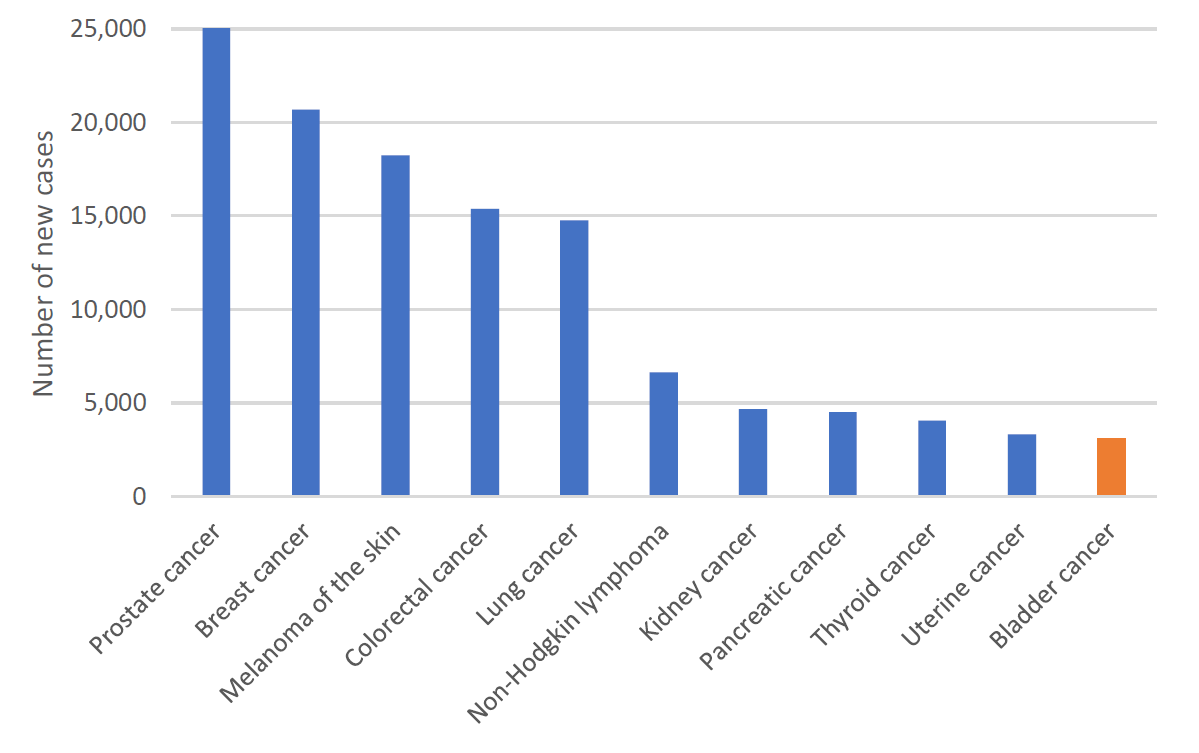
Figure 1. Estimated cancer incidence in Australia, 2023
Notes
- Data sourced from AIHW Cancer Data in Australia 2023 web report and supplementary data tables
- More information about incidence rates for the most common cancers diagnosed can be found on the NCCI website in the ‘Cancer incidence’ section (https://ncci.canceraustralia.gov.au/diagnosis/cancer-incidence/cancer-incidence)
In 2019, the age-standardised incidence rate was 12 cases per 100,000 persons (20 for males and 5.3 for females). In 2023, it is estimated that the age-standardised incidence rate will be 12 cases per 100,000 persons (20 for males and 5.3 for females). The incidence rate for bladder cancer is expected to increase with age, highest for those aged 85–89 years.
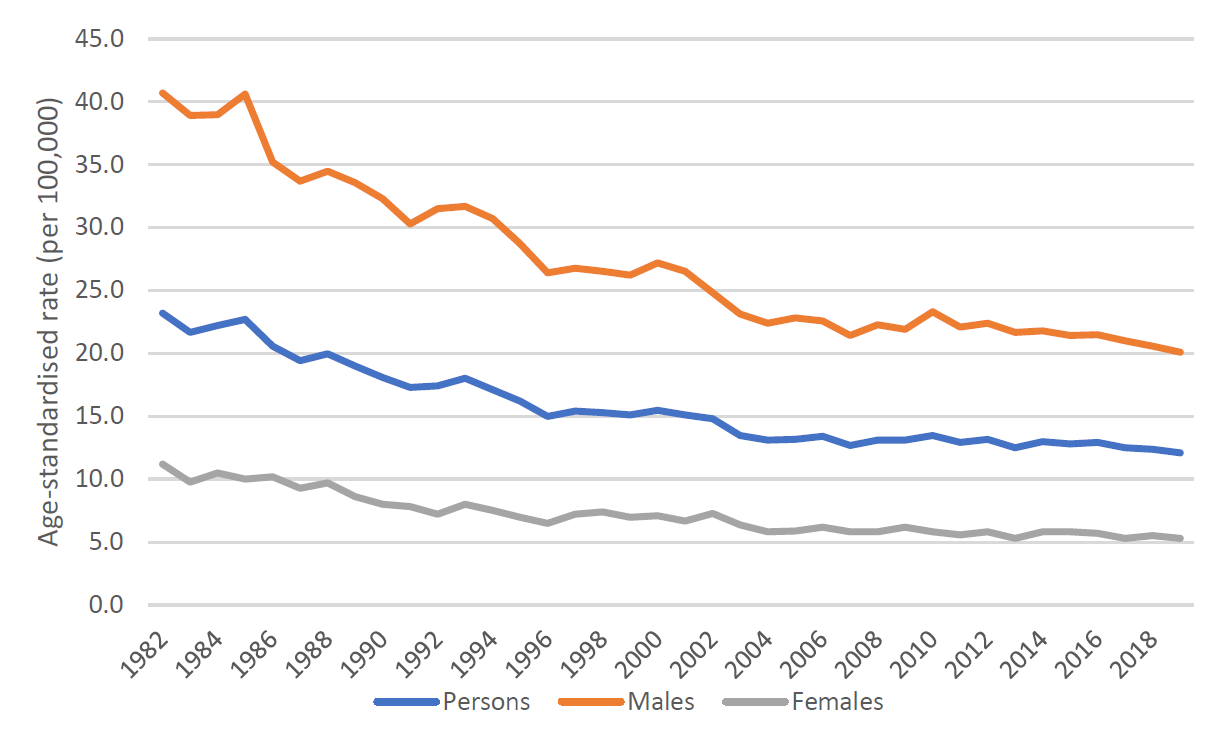
Figure 2. Age-standardised incidence rates for bladder cancer cancer, 1982 to 2019, by sex
Notes
- Data sourced from AIHW Cancer Data in Australia 2023 web report and supplementary data tables
- Age standardised rates are standardised to the 2023 Australian Standard Population
- More information about incidence rates for bladder cancer over time, by age, sex, Indigenous status, remoteness, and socioeconomic status (SES) can be found on the NCCI website in the ‘Cancer incidence’ section (https://ncci.canceraustralia.gov.au/diagnosis/cancer-incidence/cancer-incidence)
The number of new cases of bladder cancer diagnosed increased from 2,146 (1,569 males and 577 females) in 1982 to 2,815 in 2019. Over the same period, the age-standardised incidence rate decreased from 23 cases per 100,000 persons (41 for males and 11 for females) in 1982 to 12 cases per 100,000 in 2019.
Deaths
In 2021, there were 1,094 deaths from bladder cancer in Australia (773 males and 321 females). In 2023, it is estimated that there will be 1,061 deaths (760 males and 301 females). In 2023, it is estimated that a person has a 1 in 396 (or 0.25%) risk of dying from bladder cancer by the age of 85 (1 in 266 or 0.38% for males and 1 in 796 or 0.13% for females).
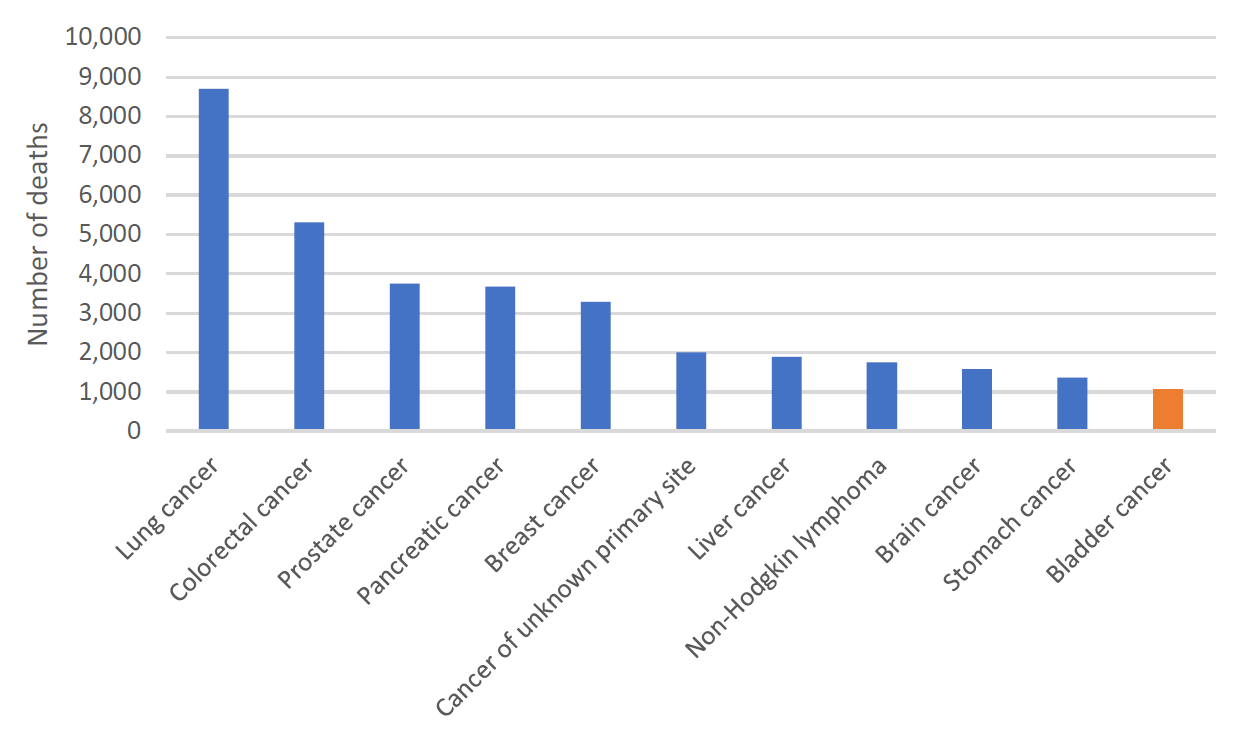
Figure 3. Estimated cancer mortality in Australia, 2023
Notes
- Data sourced from AIHW Cancer Data in Australia 2023 web report and supplementary data tables
- Two sources are used for cancer mortality reporting rankings (National Mortality Database and Australian Cancer Database). Mortality data reported for cancer of unknown primary site, liver cancer and stomach cancer in the chart above is from the Australian Cancer Database. Data from the National Mortality Database is presented in-text unless it is unavailable. More information can be found at AIHW interim guidelines (https://www.aihw.gov.au/reports/cancer/cancer-data-in-australia/contents/cancer-data-commentaries/interim-guidelines-choosing-which-mortality-data)
- More information about mortality rates for the most common causes of cancer death can be found on the NCCI website in the ‘Cancer mortality’ section (https://ncci.canceraustralia.gov.au/outcomes/cancer-mortality/cancer-mortality)
In 2021, the age-standardised mortality rate was 4.4 deaths per 100,000 persons (7.2 for males and 2.3 for females). In 2023, it is estimated that the age-standardised mortality rate will be 4.0 deaths per 100,000 persons (6.7 for males and 2.0 for females). The mortality rate for bladder cancer is expected to increase with age.
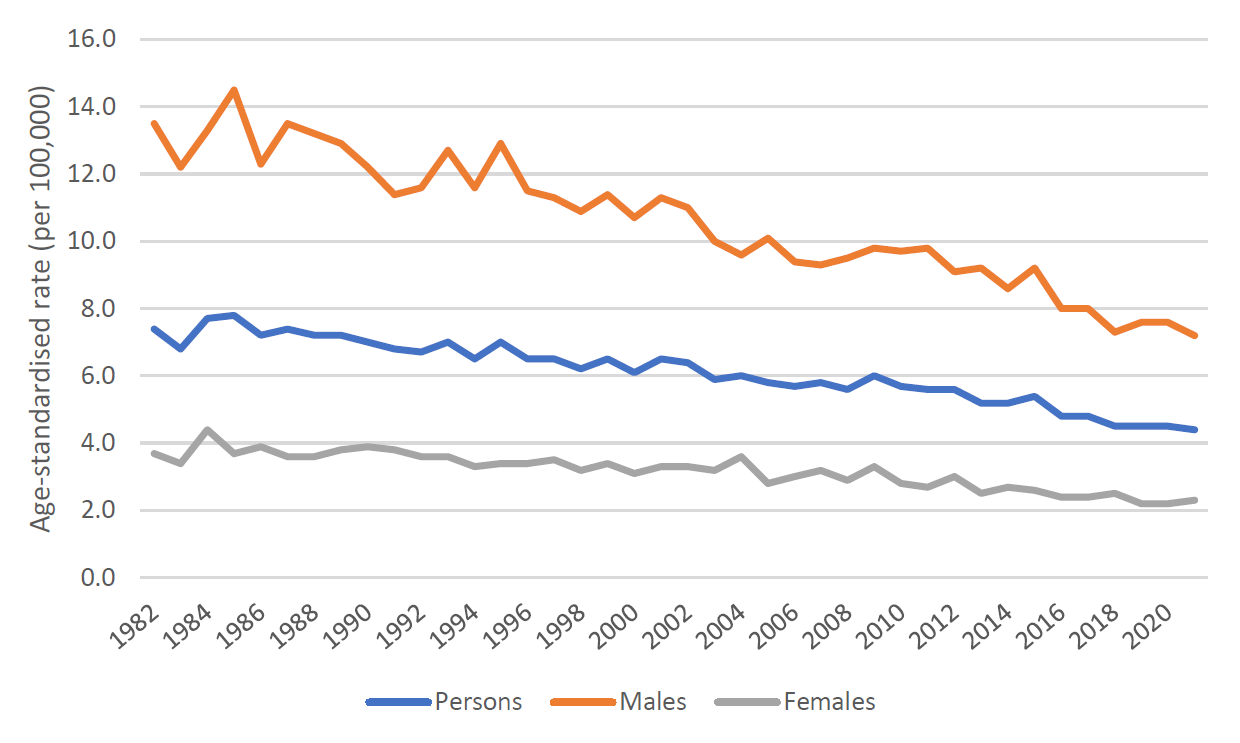
Figure 4. Age-standardised mortality rates for bladder cancer cancer, 1982 to 2021, by sex
Notes
- Data sourced from AIHW Cancer Data in Australia 2023 web report and supplementary data tables
- Age standardised rates are standardised to the 2023 Australian Standard Population
- More information about mortality rates for bladder cancer over time, by age, sex, Indigenous status, remoteness, and socioeconomic status (SES) can be found on the NCCI website in the ‘Cancer mortality’ section (https://ncci.canceraustralia.gov.au/outcomes/cancer-mortality/cancer-mortality)
The number of deaths from bladder cancer increased from 603 (428 males and 175 females) in 1982 to 1,094 persons in 2021. Over the same period, the age-standardised mortality rate decreased from 7.4 deaths per 100,000 persons (14 for males and 3.7 for females) in 1982 to 4.4 deaths per 100,000 in 2021.
Survival
In 2015–2019, individuals diagnosed with bladder cancer had a 57% chance (59% for males and 49% for females) of surviving for five years compared to their counterparts in the general Australian population. Between 1990–1994 and 2015–2019, five-year relative survival for bladder cancer decreased from 65% to 57%.
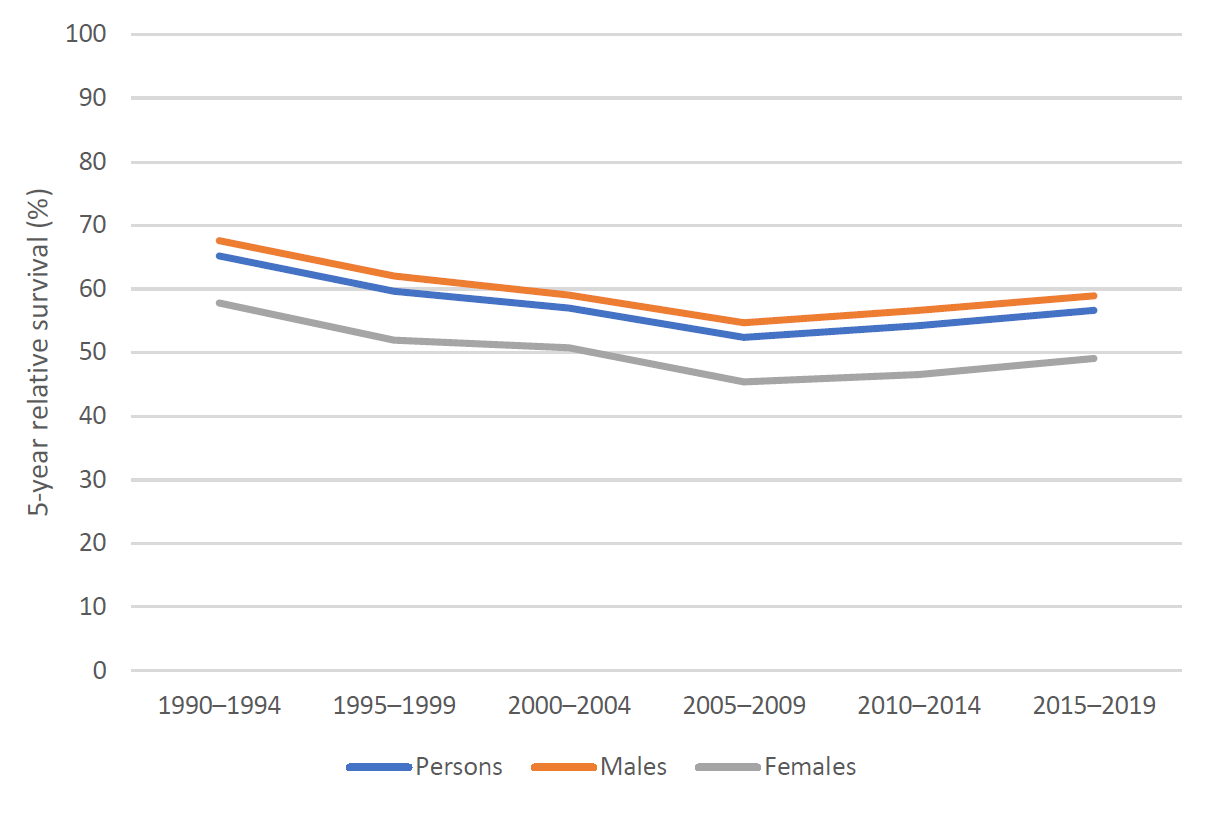
Figure 5. 5-year relative survival for bladder cancer, 1990–1994 to 2015–2019, by sex
Notes
- Data sourced from AIHW Cancer Data in Australia 2023 web report and supplementary data tables
- More information about 5-year relative survival rates for bladder cancer over time, by age, sex, Indigenous status, remoteness, and socioeconomic status (SES) can be found on the NCCI website in the ‘Relative survival rate’ section (https://ncci.canceraustralia.gov.au/outcomes/relative-survival-rate/5-year-relative-survival)
Prevalence
At the end of 2018, there were 2,397 people living who had been diagnosed with bladder cancer that year, 8,443 people living who had been diagnosed with bladder cancer in the previous 5 years (from 2014 to 2018) and 20,143 people living who had been diagnosed with bladder cancer in the previous 37 years (from 1982 to 2018).
For more information, see Bladder cancer on the NCCI website
The National Cancer Control Indicators (NCCI) are a set of indicators across the continuum of cancer care, from Prevention and Screening through to Diagnosis, Treatment, Psychosocial care, Research and Outcomes. The NCCI website allows users to see visual representations of data on each indicator through interactive charts.




